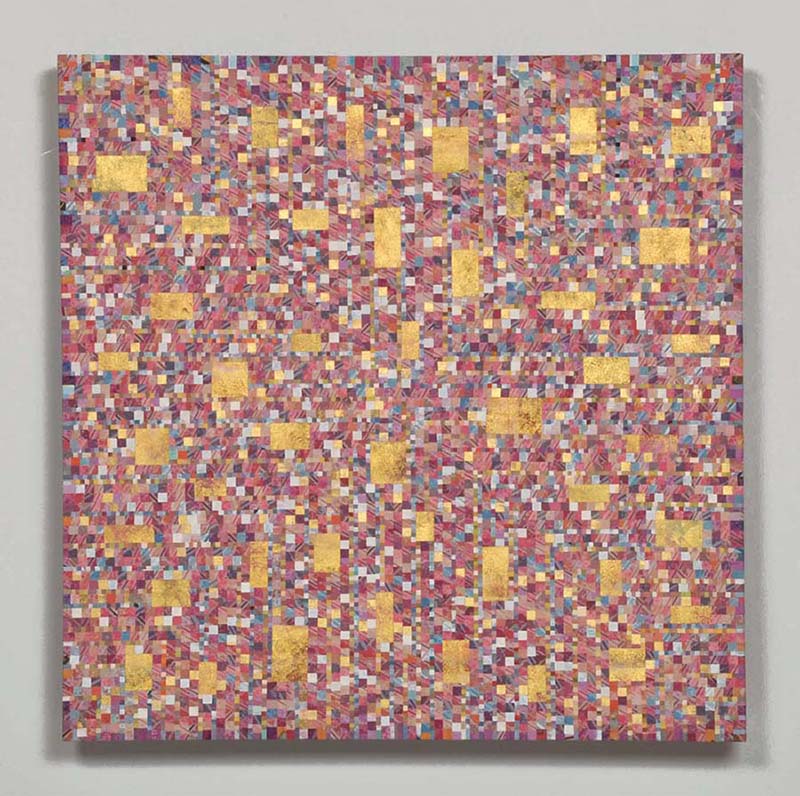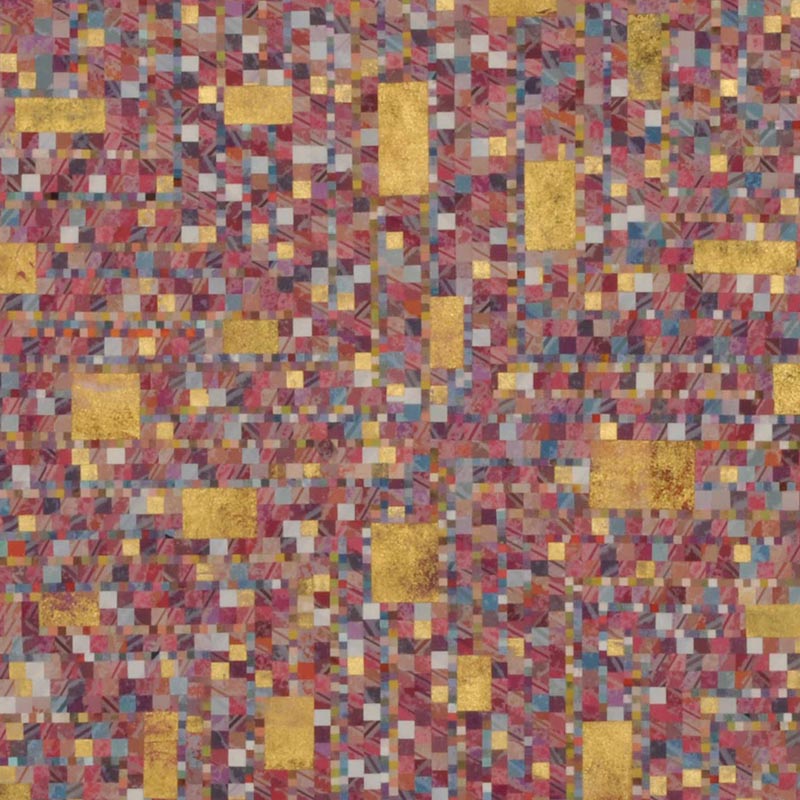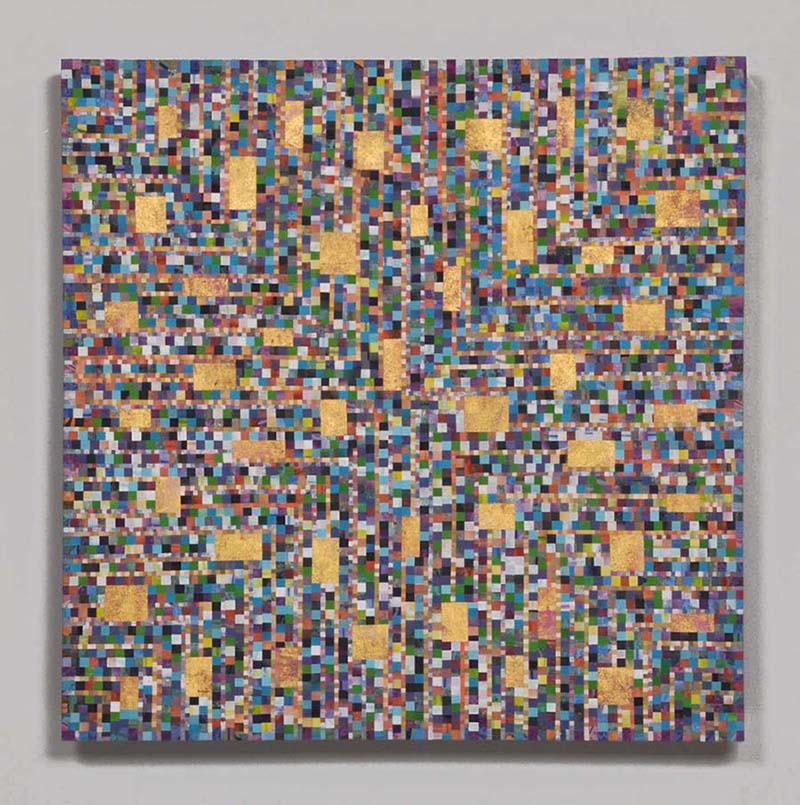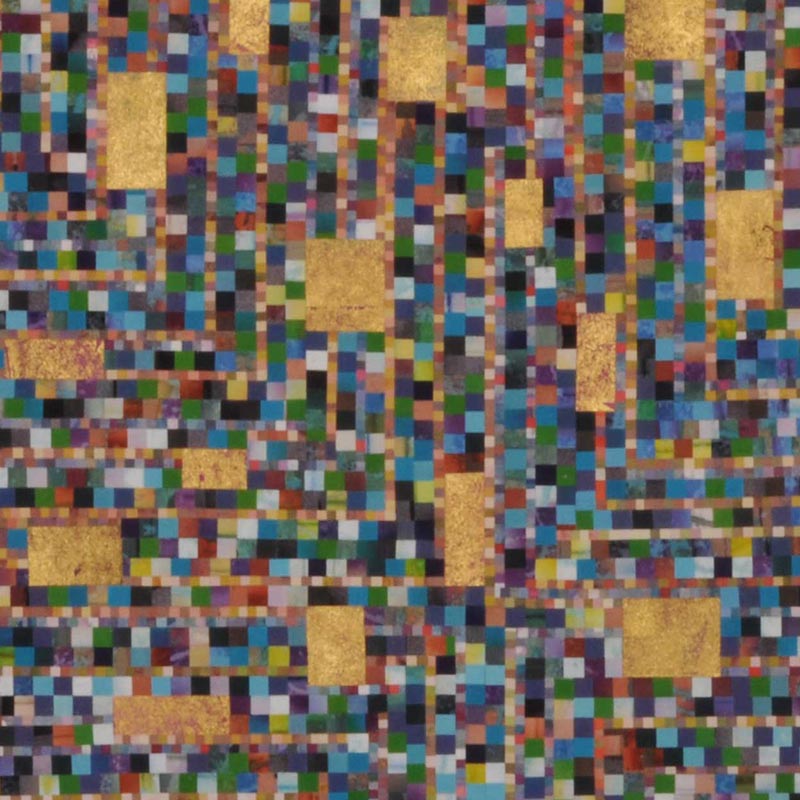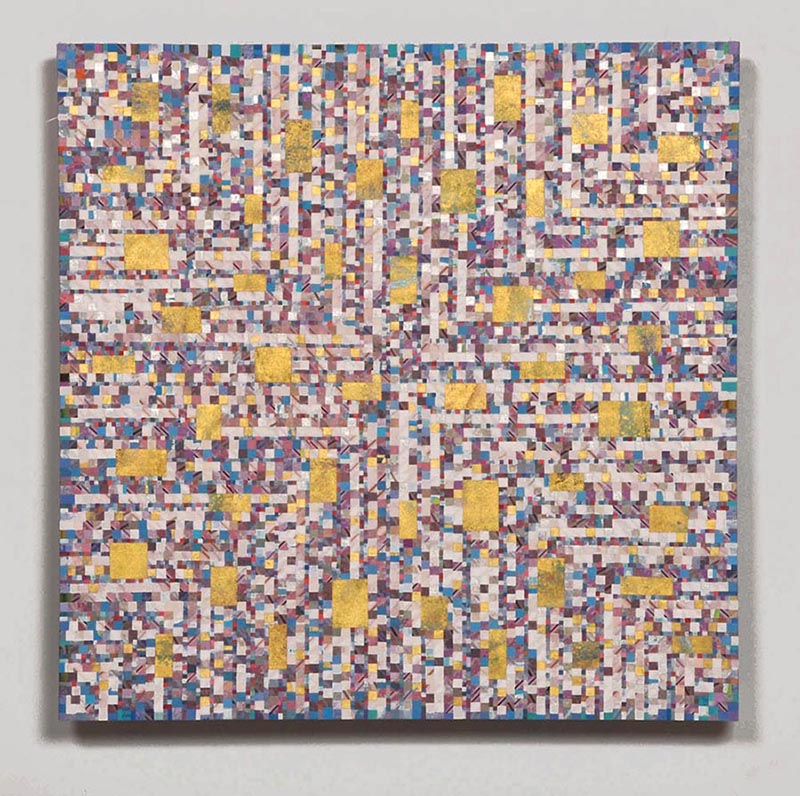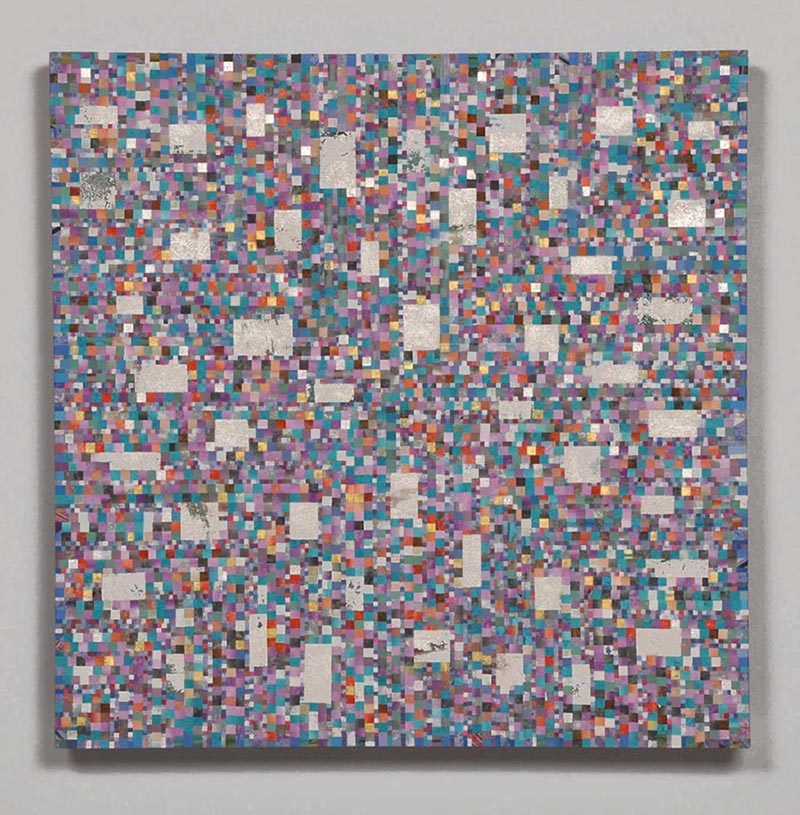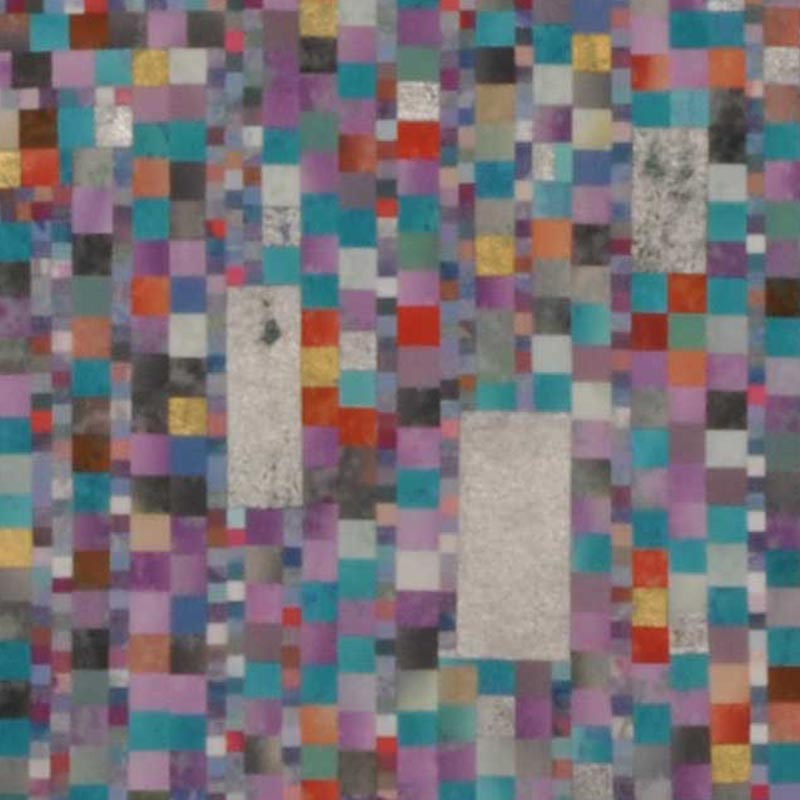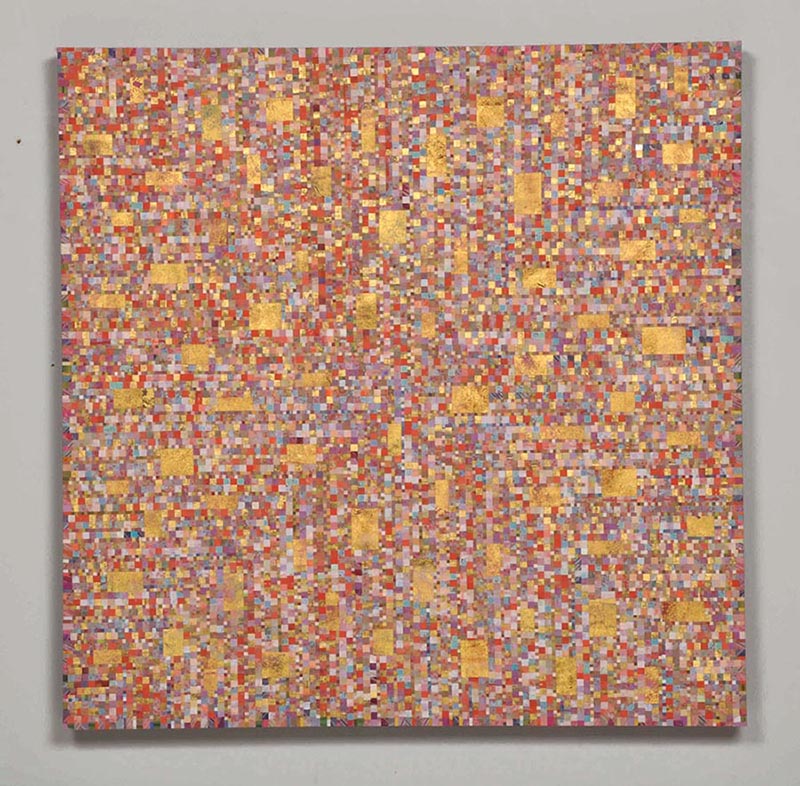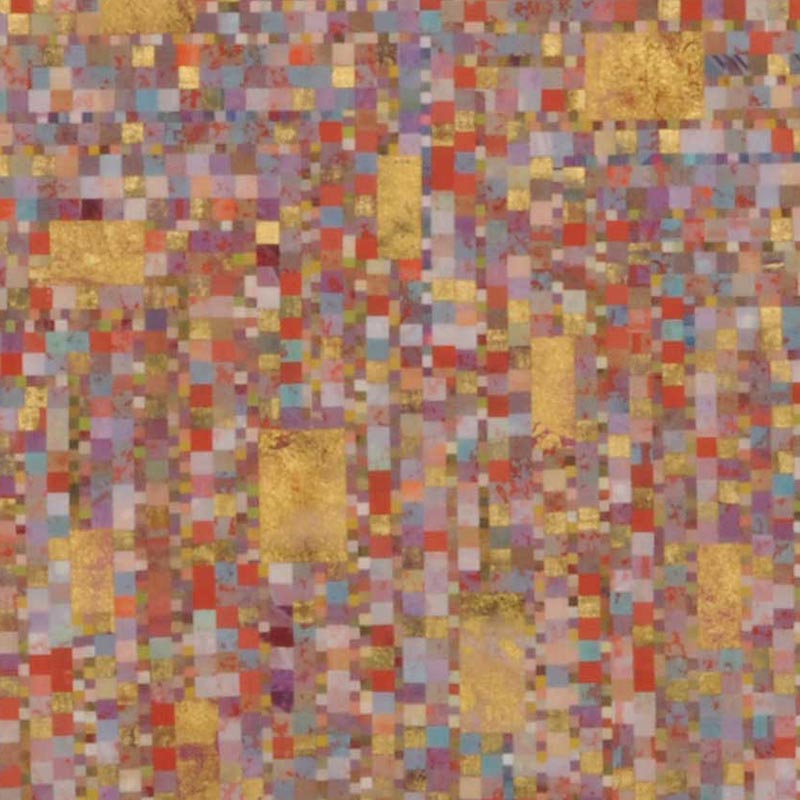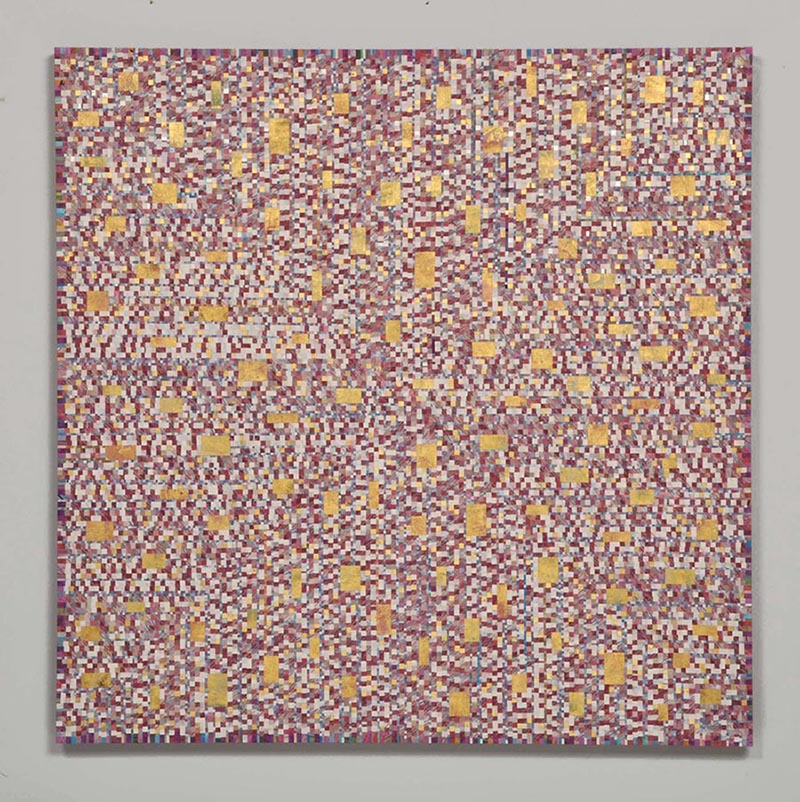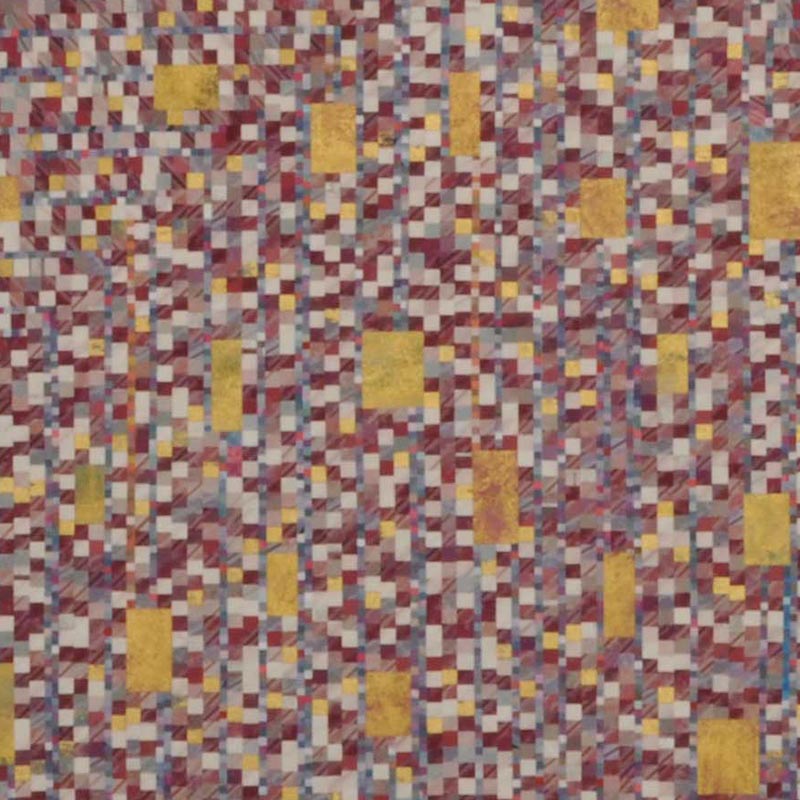Shredded Message: Cloth Inlay/ Mosaic
Introduction by Keiko Fukai
Fukumoto Shigeki is a world renowned Rozome artist whose work is frequently exhibited in many different countries. He is also the author of several important books on KOGEI (high quality Japanese crafts) and textiles.
In 1992, he developed a new technique he describes as textile inlay, which involves cutting very small pieces of dyed fabric and reassembling them into large pieces which express a new sensuality and dimensional depth. A brief documentary film on this website illustrates this complicated working process.
In March 2016, professor Fukumoto retired from Osaka University of Arts and is now working fulltime as an artist.
My signature style, cloth inlay mosaic, was developed around 1992 without any particular concept, and only as just an experiment. Until then, I had been dyeing only large pieces of fabric, and felt that cutting them into pieces was taboo.
However, I realized that if I employed a very old, traditional technique used in mounting scroll painting–which involves applying thin Japanese washi (paper) as a backing–then I could shred the fabric and easily reassemble these pieces into a new format. This technique prevents the fabric from fraying. And if then another layer of backing is applied to the reassembled pieces it is possible to cut the reassembled fabric at a different angle. Consequently, repeating this process makes it possible to create incredibly complicated geometrical patterns, like a mosaic.
This technique allowed me to create works of art that were innovative—cloth inlay mosaic. It is almost impossible to employ this technique with other materials, and I think this makes my cloth inlay very special. There have been times when I thought I should not continue working on such time consuming pieces, but my fascination with cloth inlay mosaic has now continued for more than twenty years, and I continue to discover new stages as I explore this technique.
I confess I am a very impulsive person, and I think this makes it possible for me to continue to work in this very tedious manner because I am always in a hurry to discover the end of a task that is endless.

